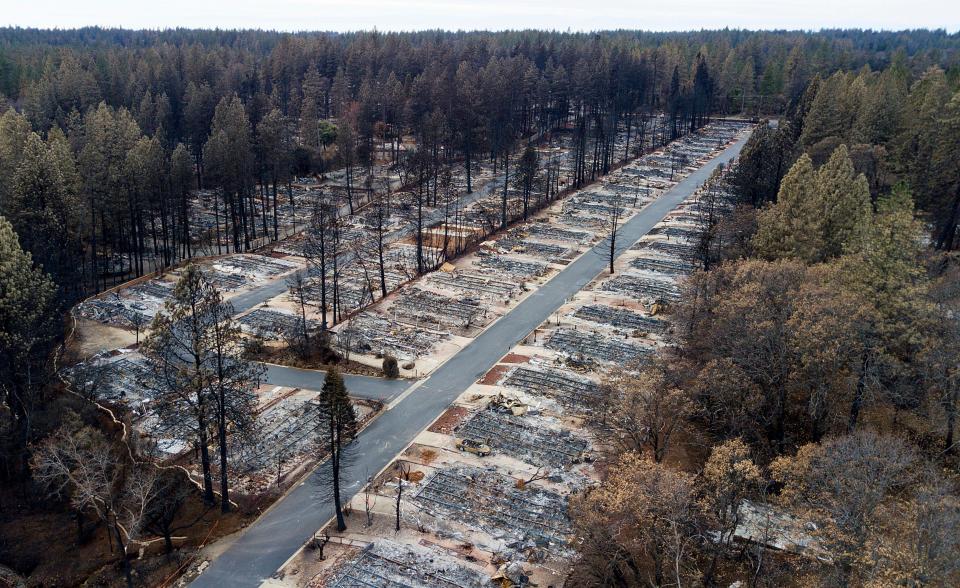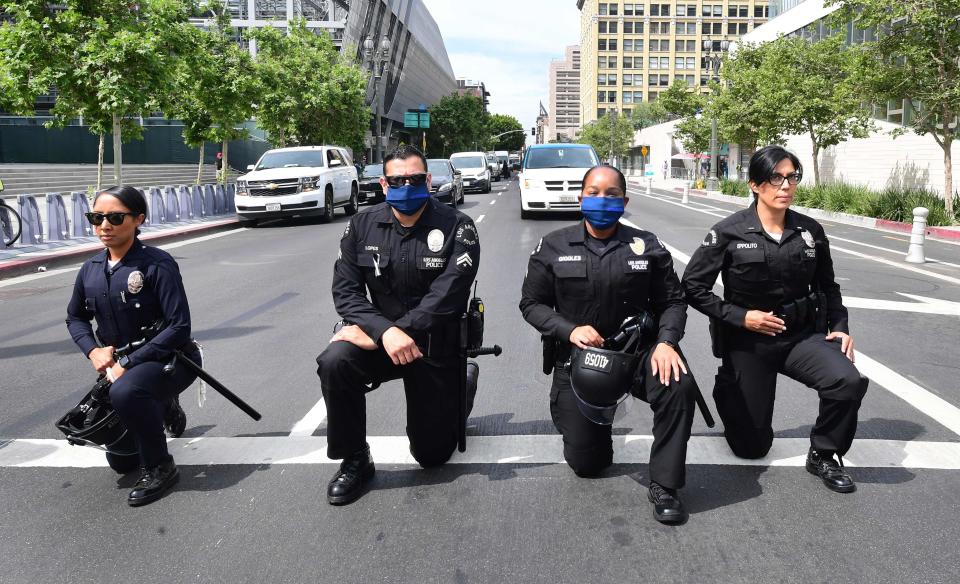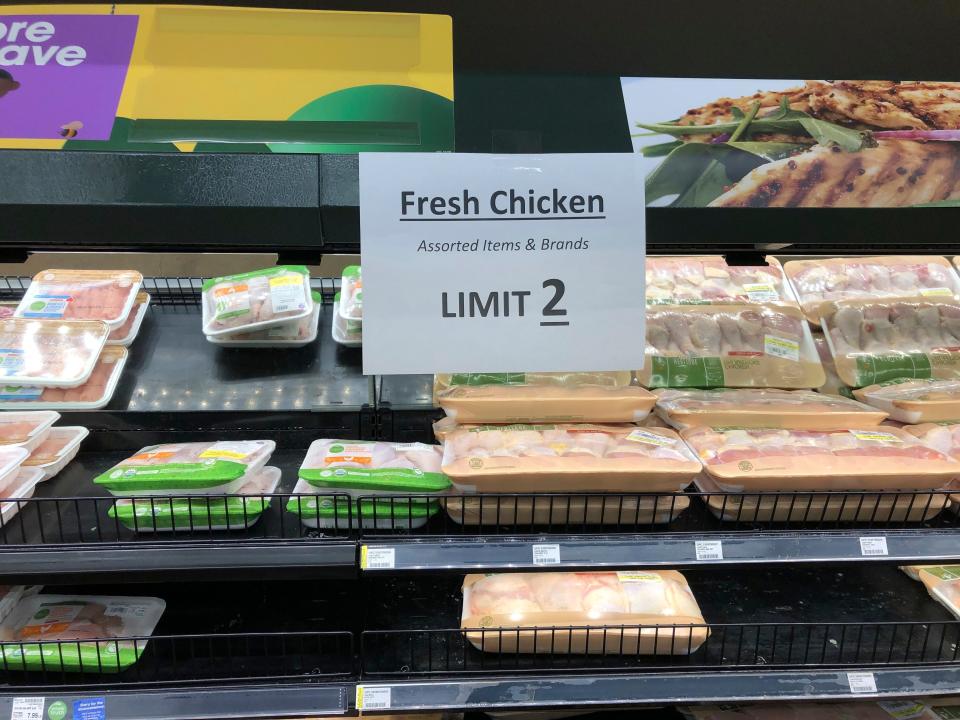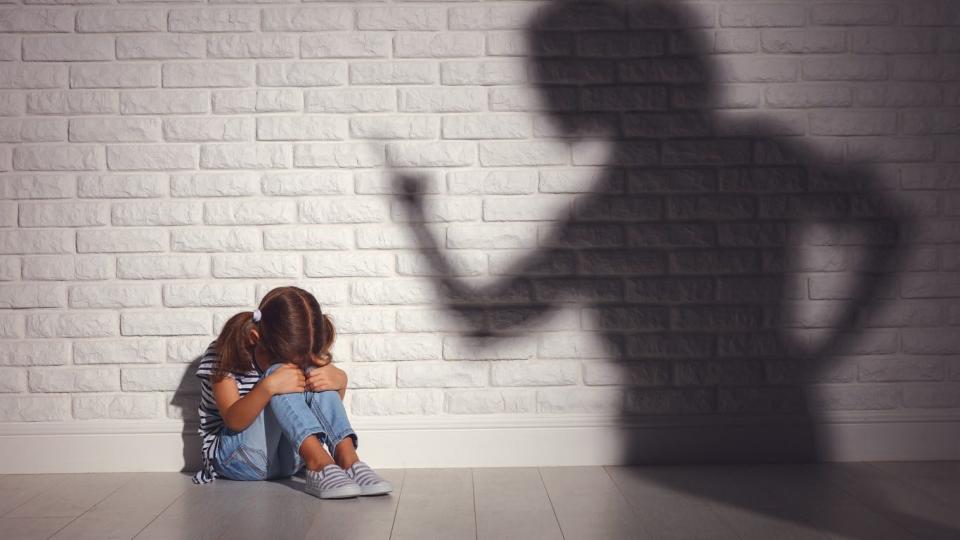In CA: 84 counts of manslaughter for PG&E, and a man's final, tortured hours in custody
PG&E pleads guilty to 84 counts of involuntary manslaughter for its role in the 2018 Camp Fire. L.A. wants cuts of up to $150 million in the LAPD. And I talked to the deputy director of Santa Barbara County's child welfare agency about life for children in a time of isolation and distancing.
It's Arlene bringing you news to know this Tuesday.
But first, yesterday I told you about things people like me bought in the pandemic (beans, pasta, eggs). Here's what rich people bought.
In California brings you top stories and commentary from across the USA TODAY Network and beyond. Get it free, straight to your inbox.
PG&E pleads guilty to involuntary manslaughter

Long accused of putting profits before customer safety, Pacific Gas & Electric pleaded guilty Tuesday to 84 felony counts of involuntary manslaughter stemming from the deadliest and most destructive fire in California history.
PG&E has acknowledged its neglected equipment set off the fire that destroyed most of Paradise in 2018. The Camp Fire claimed the lives of over 80 people as the blaze burned more than 153,000 acres.
At Tuesday’s hearing in superior court in Butte County, where what’s left of the town of Paradise is located, Judge Michael Deems recited the 84 counts one by one as photos of the victims were displayed in the courtroom.
Looking at each photo, PG&E CEO Bill Johnson repeatedly answered, “Guilty, your honor” to the charges.
In Riverside County, the last, tortured hours of a man's life
A Cathedral City man, in the throes of a psychiatric crisis, spent the last hours of his life restrained, hit and begging for help in a hospital unit for inmates, a ProPublica investigation into the March 2017 death of Philip Garcia found.
Riverside County sheriff's deputies falsified reports and a coroner ruled the death a homicide. The department did not discipline any deputies. Garcia's family sued, and the case was settled for just under $1 million.
The LAPD, public health officers and an alleged shooter with right-wing ties

The Los Angeles City Council directs staff to find between $100 million and $150 million in cuts to the LAPD. Council member Herb Wesson Jr. tweeted he wants officers with unarmed, non-law enforcement agencies to respond to non-violent calls for service.
The LAPD says it spent $40 million on overtime covering the protests and responding to the coronavirus so, starting June 7, it will offer time off instead of OT. It's not clear whether OT will be required to fill that time off later.
At least seven public health leaders have resigned or retired in recent weeks, but first, they're second-guessed, threatened and harassed.
A man suspected of killing a Santa Cruz County sheriff’s sergeant and an Oakland security guard appears to be linked to a right-wing extremist group that has called for civil unrest and a second civil war, officials said.
What else we're talking about

A longtime Filipino resident of a wealthy, predominantly white neighborhood talks about the video he took of the white woman who called police on him as he wrote "Black Lives Matter" in chalk. In front of his house.
A suicidal man drove his truck off a San Diego cliff with his twin daughters inside. Miraculously, everyone survived.
Remember those meat shortages that prompted President Trump to step in and give beef, pork and chicken plants authority to keep operating? A USA Today investigation determined we were never at risk of a meat shortage.
In Major League Baseball, the gap between corporate magnate and working-class employees grows. Take Oakland Athletics billionaire owner John Fisher, who took away before giving back the $400 weekly stipends for his minor leaguers (Opinion).
In the pandemic, what's happening to kids?
There are, these days, fewer eyes on children. The coronavirus outbreak closed schools, camps, day cares and religious services, all places where mandated reporters of abuse come into contact with children.
Across the country, child welfare advocates have worried more children could be at risk for abuse in homes where stress may be exacerbated by health worries, loss of income and being kept isolated for prolonged periods of time. There is no break.
I asked Amy Krueger, deputy director of Santa Barbara County's children welfare services, to talk to me about what she was seeing and what we could do to help at a time we're being cautioned (necessarily) to keep apart.
We talked by email. Our conversation has been edited for length and clarity.

Q: I’ve seen stories that show reports to the child protection system are down. Is that what we’re seeing here in California and Santa Barbara County?
A: Yes, states all across the nation including California are consistently seeing decreases in reports by as much as 50%. In Santa Barbara County we have seen a similar trend with reports declining by 40-50% of average.
Q: I understand that once school resumes after summer, reports to the child welfare system often increase. Why is that?
A: Teachers and other school personnel are mandated reporters and one of largest sources of reports to our child abuse hotline. The number of reports we receive tend to follow the school calendar with peaks in the fall when school begins and again in the spring before the school year ends.
Q: Do you anticipate a similar surge of cases once schools and more childcare facilities reopen?
A: Yes. Many child welfare professionals have predicted a surge in reports once schools and child care programs reopen and children resume contact with mandated reporters such as teachers and early care and education providers and they begin to share information about what might have gone on behind closed doors during quarantine.
Q: Is the agency ready for that?
A: We are continuing to monitor the number of reports we are seeing and making contingency plans for any adjustments we need to make in staffing for our emergency response program. Child safety is our top priority and we are committed to continuing to meet our mandated timeframes for timely responses to investigate reports of abuse and neglect.
► Want more Golden State news? Sign up for our California newsletter here.
Q: What has changed about the way you investigate reports or other aspects?
A: While our social workers are still out in the field, there have been some changes in practice. Interviews may take place outside the family home, on the doorstep or front yard for example. In the case of visits with children who are placed in a stable foster care setting, interviews are often conducted via phone or video first followed by a shorter face to face visit from the doorstep or driveway.
Q: I’d imagine every department is being asked to look hard at spending in light of the severe revenue shortfalls so many cities and counties are anticipating (and already seeing). Could that impact child social services?
A: Yes, the steep decline in revenues the state is experiencing has a profound effect on county realignment funding, which provides a significant share of the funding available for child welfare services. Backfilling these losses with additional federal and state funding is critical to avoid cuts to child welfare and other programs that ensure the safety and wellbeing of vulnerable children.
Q: Has there been any impact on the foster care system, like, for example, fewer families getting involved because of the pandemic and social distancing concerns?
A: We were worried initially about the potential impacts to resource family recruitment, however, we were pleasantly surprised by the number of people who stepped forward to open their hearts and homes to children in foster care in spite of their concerns and the impacts of the pandemic.
Q: What’s been your biggest concern as this pandemic stretches on?
A: Parenting is hard at the best of times and during a crisis of this magnitude can quickly become completely overwhelming. There is real concern across the child welfare and prevention community that that decline in reports does not reflect an actual decrease in abuse and neglect, and is cause for deep concern. Children are now at greater risk due to increases in family stress and isolation as well as deteriorating conditions in homes where families are already struggling and without the support and resources they need.
Q: I’ve read research about the lasting impacts the pandemic could have on children, especially ones from homes where they may be abuse, neglect or other problems. How could those effects play out in the long term?
A: The pandemic and associated economic effects are stressful for everyone, and even more so for children without a consistent, caring adult in their lives. Children who are exposed to prolonged adversity such as physical or emotional abuse, chronic neglect, caregiver substance abuse or mental illness, exposure to violence, and/or the cumulative effects of poverty, discrimination, and family economic hardship, are at greater risk of long-term effects to their learning, behavior and physical and mental health.
Q: What can I or other people do to help? Do you have suggestions for being the eyes and ears of what may have been flagged in different times by teachers or daycare providers?
A: Community awareness about violence and the impact it has on children is critically important. Children are relying on other caring adults, like family, friends, and neighbors, to reach out and take action. We encourage everyone to pay close attention and find ways to connect with and provide support to families during this difficult time, especially those with young and vulnerable children. Protecting children is everybody’s business and we are all accountable. If you see signs of child abuse and neglect, report it to the child abuse hotline.
Q: Anything I didn’t ask you about?
A: There are community resources available for families such as food, shelter, and physical and mental health care that can help in these challenging times and we encourage families to seek help if they need it. It is critically important that we support the wellbeing of children and their caregivers in our communities. Now, more than ever, children need caring adults and families need connection and support so that they can provide safe, stable, and nurturing relationships and environments in which children can thrive!
In California is a roundup of news from across USA TODAY Network newsrooms and beyond. Also contributing: Los Angeles Times, San Francisco Chronicle, ProPublica, CalMatters, KQED.
This article originally appeared on USA TODAY: California, PG&E, Camp Fire, child welfare, LAPD, MLB: Tuesday's news

